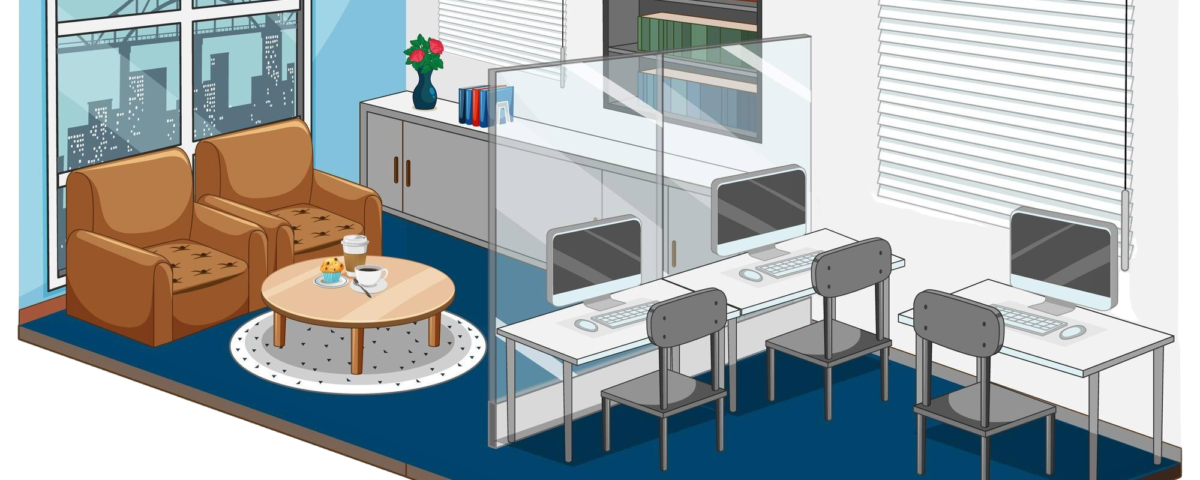
Smart Design Tips for Small Spaces
November 14, 2024
Why Attention to Detail Matters in Construction Projects
November 15, 2024Open floor plans have become increasingly popular for homeowners who want to create a sense of flow, spaciousness, and flexibility in their homes. An open floor plan integrates multiple rooms into a single, large space, typically combining the kitchen, dining, and living areas. This approach can enhance a home’s aesthetic appeal, increase natural light, and promote better social interaction among family members.
If you’re considering a home renovation that includes an open floor plan, this guide from Develoscape will walk you through the essential planning, design ideas, and inspiration needed to achieve the perfect open layout.
Why Choose an Open Floor Plan?
Before diving into the details of designing an open floor plan, let’s explore why it has become a favored choice for homeowners and how it could benefit your home:
- Enhanced Natural Light: Open layouts allow light to flow freely, illuminating your home and making it feel more welcoming. By removing walls and barriers, natural light from windows can fill the entire space, creating a bright and airy environment.
- Improved Social Interactions: An open floor plan fosters interaction by removing walls that separate family members or guests. This makes it easier to engage in conversations or supervise children, even when in different parts of the same open space.
- Better Flow and Functionality: With fewer walls, movement within the home becomes more fluid, making the layout feel more spacious and accessible.
- Increased Flexibility: Open spaces offer more options for furniture arrangement and decor, allowing you to be more creative with your interior design.
The experienced team at Develoscape specializes in designing open floor plans that enhance both aesthetics and functionality, helping clients achieve the home of their dreams.
Step 1: Assessing Your Space and Needs
The first step in planning an open floor concept is evaluating your current layout and understanding your needs. Each home is unique, and a well-thought-out design should be tailored to your lifestyle, family size, and functional requirements.
Key Considerations:
- Room Placement: Decide which rooms you want to combine in your open floor plan. Common combinations include kitchen-dining-living spaces, creating a seamless flow from cooking to dining to relaxing.
- Traffic Patterns: An open floor plan should support easy navigation and natural movement between different areas. Avoid placing furniture or obstacles that interrupt the flow.
- Storage Solutions: Without walls, storage space can be limited. Consider creative options, such as built-in cabinetry, to maintain a clutter-free environment.
A personalized consultation with Develoscape can provide insights into how an open floor plan can work best in your space. We work closely with homeowners to design layouts that reflect their needs and maximize both form and function.
Step 2: Define Zones with Furniture and Area Rugs
Although an open floor plan minimizes walls, it’s essential to create defined zones within the space. This helps maintain organization, making each area within the larger room feel purpose-built without compromising the openness of the layout.
- Use Area Rugs: Rugs are a fantastic way to visually separate different zones. Place one under the dining table and another in the living area to create clear distinctions between spaces.
- Strategic Furniture Arrangement: Arrange sofas, tables, and chairs in a way that naturally divides the room. For example, place a sofa with its back to the dining area to delineate the living room.
- Add Shelving and Room Dividers: Open shelving or decorative room dividers can separate spaces while still allowing light and air to flow freely.
With the right design approach, the team at Develoscape can help you create seamless zones that enhance both functionality and aesthetics, providing you with the perfect layout to fit your lifestyle.
Step 3: Consider Ceiling and Lighting Solutions
One of the most impactful ways to enhance an open floor plan is through thoughtful lighting and ceiling design. These elements can add dimension and atmosphere, further accentuating the sense of space and openness.
- Layered Lighting: Combine different types of lighting, including ambient, task, and accent lights, to create depth and focus. Pendant lights over the dining table and kitchen island, along with recessed lighting in the living area, add warmth and functionality to each zone.
- Ceiling Treatments: Adding beams, coffered ceilings, or contrasting paint colors can help delineate zones while also adding visual interest. Vaulted ceilings are an excellent option to enhance spaciousness.
- Use Natural Light: Maximize windows and consider sliding glass doors to bring in as much natural light as possible, making the space feel open and connected to the outdoors.
At Develoscape, our designers are skilled in using lighting and ceiling details to transform any room, giving it depth and character that complements the open layout.
Step 4: Choose a Cohesive Color Scheme
When working with an open floor plan, a cohesive color scheme is essential. A unified palette ties the different zones together, creating a harmonious and visually appealing space.
- Neutral Base Colors: Start with a neutral base for walls, such as white, beige, or light gray. This creates a versatile canvas that enhances the sense of openness.
- Accent Colors: Use accent colors to add personality and define individual zones. For instance, a vibrant wall in the dining area or a bold backsplash in the kitchen can create focal points.
- Texture and Material: Incorporate varied textures and materials, such as wood, metal, and textiles, to add warmth and dimension to the space without overwhelming it.
Develoscape’s designers can help you select the ideal color scheme, ensuring it complements your style while uniting the open layout beautifully.
Step 5: Invest in Multi-Functional Furniture
One of the benefits of an open floor plan is the flexibility it offers, and multi-functional furniture pieces are a great way to make the most of this adaptability.
- Extendable Tables: A dining table that can be expanded or collapsed depending on your needs is perfect for an open layout.
- Modular Sofas: A modular sofa allows you to rearrange seating based on the occasion, making it easy to accommodate both cozy family nights and larger gatherings.
- Storage-Friendly Furniture: Opt for furniture that doubles as storage, such as ottomans, benches, or coffee tables with hidden compartments.
Develoscape can guide you in selecting furniture that enhances your open floor plan’s flexibility, creating a space that is both functional and beautiful.
Step 6: Add Architectural Elements
While the goal of an open floor plan is to eliminate unnecessary walls, you can still add architectural elements that define the space and add character.
- Columns and Beams: Exposed beams or structural columns can enhance the look of your open floor plan, adding a touch of rustic charm or industrial flair.
- Partial Walls or Half-Walls: Use a half-wall to subtly separate zones without closing off the space entirely. This is especially useful between kitchens and dining areas.
- Glass Partitions: Glass walls or sliding glass doors can create visual boundaries while maintaining an open feel, allowing light to pass through freely.
Working with Develoscape, you can incorporate architectural elements that add interest and structure to your open layout, creating a unique and stylish home.
Step 7: Incorporate Indoor Plants and Greenery
Indoor plants can enhance any space by bringing a touch of nature indoors, adding freshness, color, and life to an open floor plan.
- Large Plants as Dividers: Place large potted plants strategically to help define zones naturally and create a lush, vibrant atmosphere.
- Vertical Gardens: For a unique look, consider a vertical garden or wall-mounted planters, which add greenery without taking up floor space.
- Small Plants for Accents: Place small plants on tables, shelves, or countertops to bring a bit of greenery into each area of the open space.
Indoor plants not only enhance aesthetics but can improve air quality. Develoscape can advise on the best plants to incorporate based on your space and lighting conditions, creating a balanced and harmonious environment.
Step 8: Embrace Minimalist Design Principles
Open floor plans thrive on simplicity, making minimalist design a natural fit. By focusing on essential pieces and a clean, uncluttered look, you can maintain a sense of spaciousness and flow.
- Limit Decorative Items: Keep decor items to a minimum to avoid visual clutter. Focus on a few standout pieces rather than filling every surface.
- Neutral Color Palettes: Stick to neutral colors that enhance natural light and create a serene atmosphere.
- Streamlined Furniture: Choose furniture with clean lines and minimal ornamentation. Avoid heavy, bulky items that can make the space feel crowded.
Minimalism in an open floor plan results in a home that feels light, spacious, and inviting. The Develoscape team is skilled in minimalist design, ensuring your open floor plan remains both elegant and functional.
Conclusion
Creating the perfect open floor plan requires careful planning and an understanding of both design principles and personal lifestyle needs. With these tips, homeowners can create a spacious, functional, and beautiful home that enhances everyday life.
At Develoscape, we specialize in designing customized open floor plans that suit your unique needs and preferences. Our team of architects and designers will work closely with you to turn your vision into reality, ensuring that every detail aligns with your lifestyle and aesthetic desires. For more inspiration and guidance on your next renovation project, visit us at Develoscape and take the first step toward creating your dream space.

